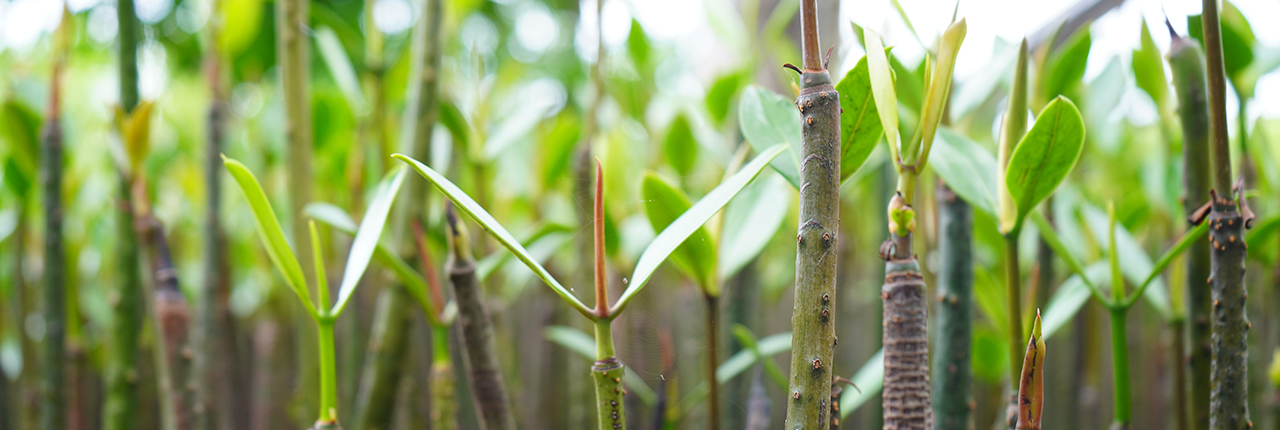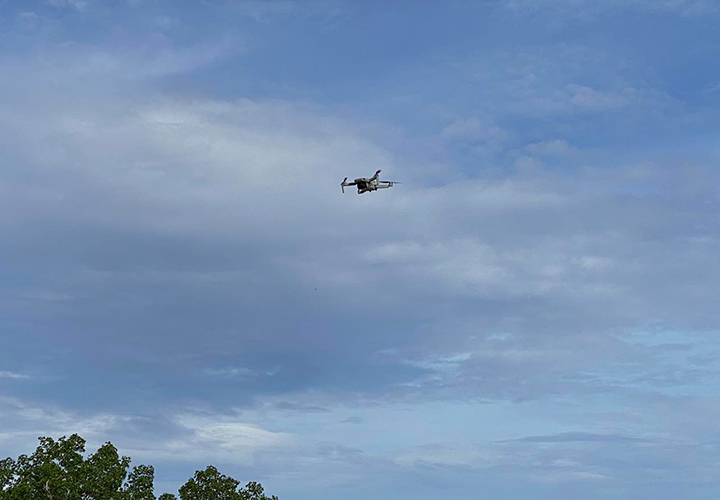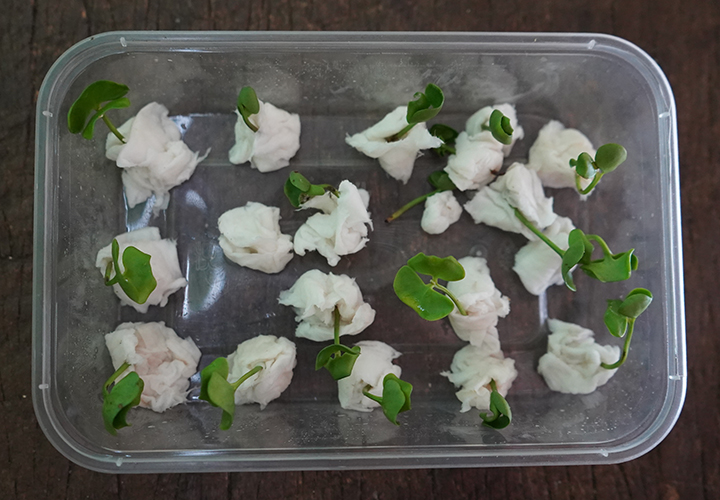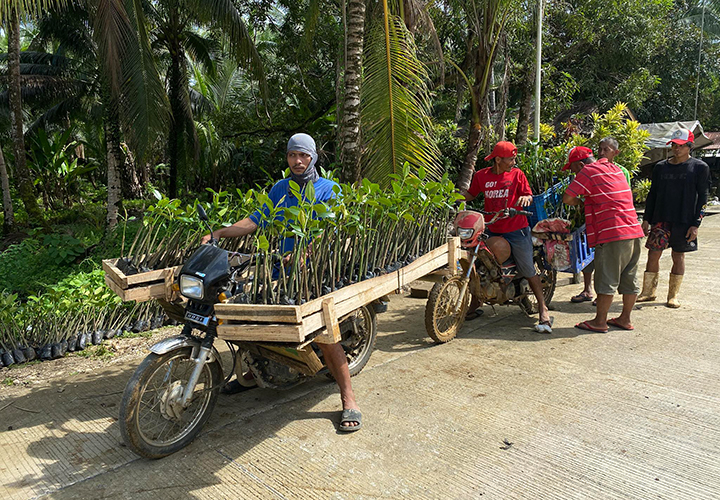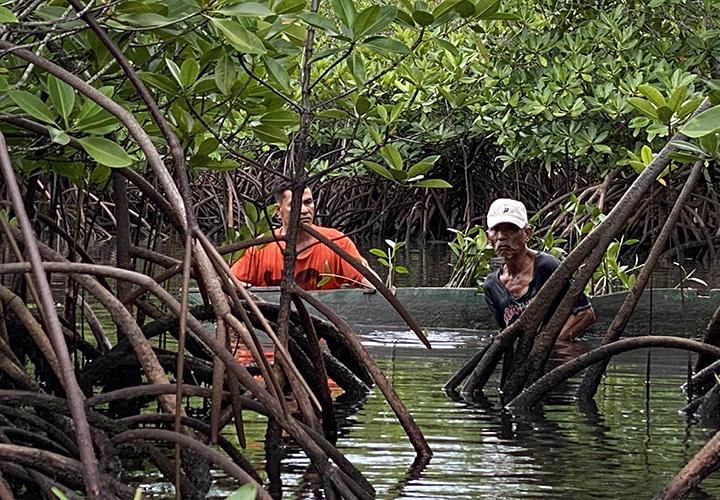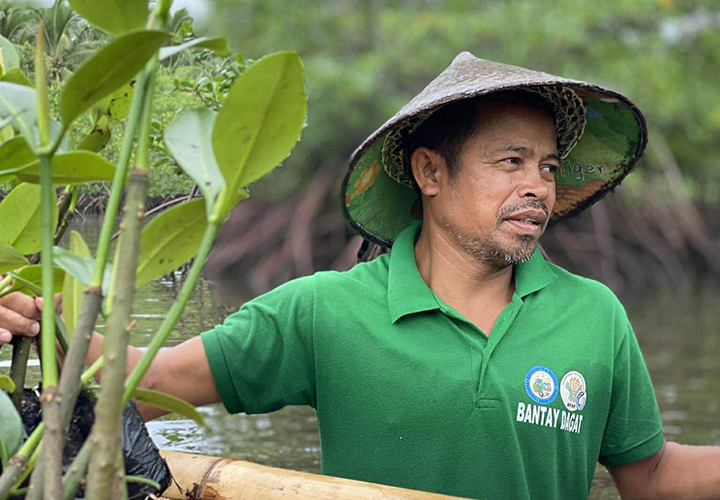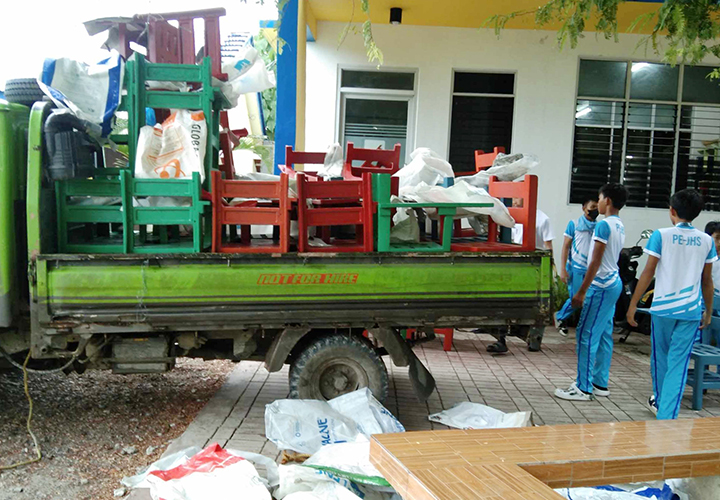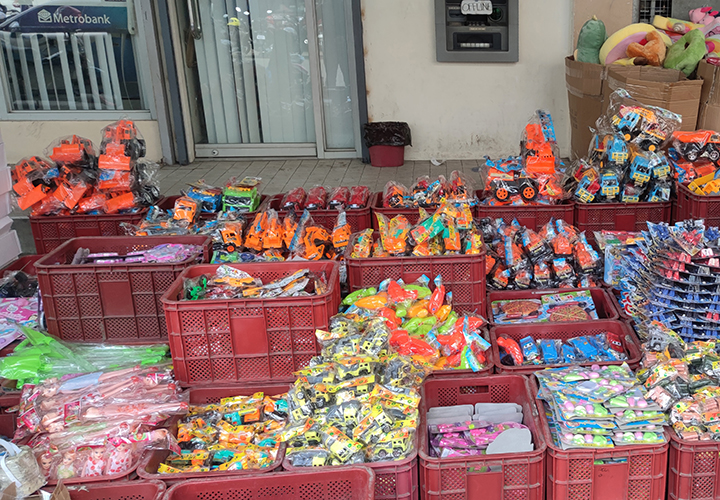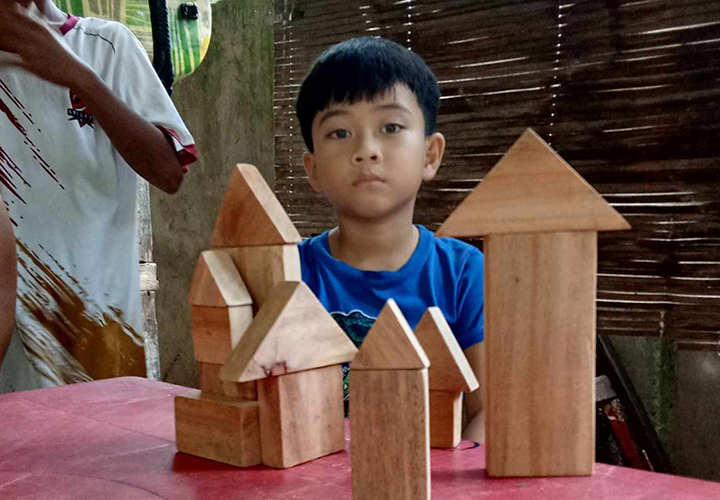The last photo of our drone before it crashed into the mangrove jungle. When we found it, the salt water had already done all the work.
The sensitive and very rare species Gapas-Gapas seeds are grown in so-called tissue culture (TC) and potted after the roots have formed.
Transportation via the waterways must take place during high water periods, otherwise the planters get stuck in the deep mud.
Transportation via the waterways must take place during high water periods, otherwise the planters get stuck in the deep mud.
After 250,000 mangroves have been planted in Baganga, 300,000 fresh seedlings are already waiting to be released into the wild in various tree nurseries. This will again be done in stages, as we plant between 20,000 and 25,000 seedlings on good days. The work before planting also takes at least two days, as the mangrove seedlings are brought to the boats and rafts in different vehicles, reloaded there and transported to the planting sites at high tide.
Part of our work also involves documenting the plantations. Unfortunately, our drone developed its own ideas during its deployment and crashed into the mangrove jungle. After a long search, we found it almost intact, but the salt water had already eaten through the electronics and turned the hard-working drone into a pile of scrap metal. A bitter loss, because the drone flights allow us to document the plantations impressively. We now have a new drone, which is already in use again. You can look forward to the next videos, which you can watch on our Facebook channel “Mama Earth Foundation”.
Garbage makes you sick
Our “Learning on tras chairs” campaign is more urgent than ever, because waste is the plague of our time and microplastics are the health problem of the coming years. Every individual has a role to play here. The first step is the simplest, but also the most effective: avoiding single-use plastic.
Just how important it is to fish up and dispose of waste is demonstrated by the fact that plastic waste that has been ground into microplastics by waves and sand has long been in our food. No fish is without it. Whether on the Zugspitze or in the Mariana Trench. Microplastics have already arrived. It has also found its way into our organs and, for the first time, even into our brains. Continuing as before is therefore not an option for a safe future.
We collect waste with our planters, but it seems an endless strain. The production of plastic is increasing mercilessly worldwide, which is also down to us consumers. We don’t have planet B, so we have to preserve and inherit ours. This requires a change.
The people in the mangrove nurseries, like here in Baganga, are proud when their seedlings grow strong, lush green and healthy.
Everyone helps. Here a member of the state organization “Bantay Dagat”, which can be translated as Guardian of the Seas or Sea Patrol.
Our small Mama-Earth truck tirelessly transports garbage from Mati to Davao. It’s amazing how ruthlessly people treat their planet.
Garbage there, school chairs back. That’s how it should be. But it is better way to avoid plastic or at least radically reduce it.
As you know, our school chairs are made from garbage that we fish out of the sea or collect from the beach. It’s a small step, but a big help for the pupils, who otherwise sometimes sit on miserably built wooden chairs that are long past their best years. Fortunately, we have again received some donations, so the next delivery to the schools will be made shortly. To promote our project, we wanted to send three of the school chairs to Germany, but the cost was prohibitive. We are now urging our visitors to bring disassembled chairs to Germany as bulky luggage. Hopefully our plan will work out.
My friend Gerald Nowack couldn’t wait for an exhibition and had the chairs rebuilt by a carpenter in Germany. Although they are not original, they show the model better than a photo. Gerald was on site and visited the classes that were already equipped with the chairs. He was also delighted with the chairs, as were the children sitting on them.
To reduce plastic toys, we make building blocks for the children out of wooden scraps. It’s amazing how cell phones and tablets lose their appeal when children can design and build houses out of wooden blocks. Children need the tactile experience. Last but not least, the building blocks stimulate the imagination and connect more
synapses than swiping on a tablet. So get to building blocks.
And please listen to our Zero Hero song: https://www.youtube.com/watch?v=P2YeTPpN7pk
Cheap plastic items are flooding the market, especially in Asia. It is almost impossible to buy wooden toys, and if you do, they are sold at astronomical prices.
These Mama Earth building blocks are cut from scrap wood and rounded with sandpaper to ensure that the children cannot push in any splinters.
If you would like to find out more about our green farm partnerships, just click here.
www.mama-earth-farming.eco

